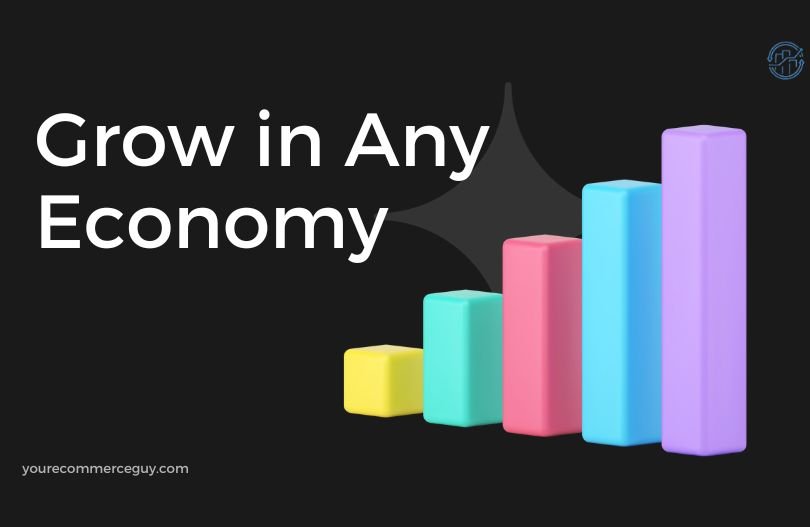

Amazon’s Procurement Revolution for Growing in Any Economy
In the fiercely competitive landscape of e-commerce or grow any economy Amazon has redefined the traditional role of procurement, turning it into a strategic powerhouse. That not only ensures cost-effectiveness but also drives innovation and grow in any economic fluctuations. Amazon’s success lies not only in its customer-centric approach but also in the transformation of its procurement function, embracing new strategies and technologies to thrive in any economic environment.
1. Customer-Centric Procurement Strategy
At the core of Amazon’s procurement philosophy is an unwavering commitment to meeting customer needs. The company has strategically aligned its procurement processes to ensure a seamless supply chain, allowing for faster delivery times, lower costs, and a diverse product offering. By understanding customer preferences and market trends, Amazon’s procurement team plays a pivotal role in shaping the company’s product portfolio and maintaining a competitive edge. For grow in any economy customer centric procurement strategy is needed.
2. Technological Innovation and Automation
Amazon has been at the forefront of adopting cutting-edge technologies within its procurement processes. The company utilizes artificial intelligence and machine learning algorithms to forecast demand, optimize inventory levels, and streamline supplier relationships. Automation of routine tasks allows Amazon’s procurement professionals to focus on strategic initiatives, such as negotiating favorable terms, fostering innovation, and identifying new business opportunities. If want to grow in any economy technological innovation and automations is very important.
3. Global Supply Chain Resilience
Amazon’s expansive global footprint necessitates a robust and resilient supply chain. The company has invested heavily in building redundancy and flexibility into its sourcing and distribution networks, allowing it to adapt swiftly to disruptions. By diversifying its supplier base and leveraging advanced logistics technologies, Amazon’s procurement function ensures that the company can withstand economic challenges, geopolitical uncertainties, and unforeseen events.
4. Sustainability as a Core Pillar
In line with growing environmental and social awareness, Amazon has integrated sustainability into its procurement strategy. The company is committed to responsible sourcing, reducing its carbon footprint, and promoting ethical business practices throughout its supply chain. Amazon’s procurement team actively collaborates with suppliers who share these values, contributing to the company’s overall sustainability goals and enhancing its reputation as a socially responsible corporate entity.
5. Data-Driven Decision Making
Amazon’s success is intricately tied to its ability to make data-driven decisions. The procurement function harnesses vast amounts of data to optimize processes, identify cost-saving opportunities, and stay ahead of market trends. Real-time analytics enable Amazon to proactively respond to changes in customer behavior. And market dynamics, ensuring that the company remains agile and adaptable in any economic climate.
6. Supplier Collaboration and Innovation
Amazon recognizes the importance of strong partnerships with suppliers. The company actively collaborates with its network of vendors to drive innovation, improve efficiency, and explore new business opportunities. By fostering a culture of collaboration and openness, Amazon’s procurement team ensures. It can tap into the collective expertise of its suppliers, creating a mutually beneficial ecosystem that contributes to sustained growth.
Frequently Asked Questions:
1. Q: What sets Amazon’s procurement strategy apart from others?
A: Amazon’s procurement strategy stands out due to its customer-centric focus, innovative technologies, sustainability initiatives, and strategic supplier collaborations, enabling the company to thrive in any economic environment.
2. Q: How does Amazon prioritize sustainability in its procurement practices?
A: Amazon integrates sustainability into its procurement by actively seeking responsible sourcing, reducing its carbon footprint, and fostering ethical business practices across its supply chain, contributing to a more sustainable and socially responsible business model.
3. Q: What role does data-driven decision-making play in Amazon’s procurement success?
A: Data-driven decision-making is a cornerstone of Amazon’s procurement success. The company utilizes real-time analytics to optimize processes, identify cost-saving opportunities, and stay ahead of market trends, ensuring agility and adaptability in a dynamic business landscape.
4. Q: How does Amazon ensure resilience in its global supply chain?
A: Amazon ensures resilience in its global supply chain by diversifying its supplier base, embracing advanced logistics technologies, and building redundancy and flexibility into its sourcing and distribution networks, allowing the company to adapt swiftly to disruptions.
5. Q: Can other businesses adopt Amazon’s procurement strategies for their growth?
A: Yes, businesses can learn from Amazon’s procurement strategies by focusing on customer-centric approaches, leveraging technology for efficiency, prioritizing sustainability, and fostering strong supplier collaborations. These principles can contribute to growth in various economic environments.
Conclusion
In conclusion, Amazon’s procurement strategy exemplifies the transformative power of redefining the role of procurement in the modern business landscape, by aligning with the company’s overall mission, embracing technological innovation, prioritizing sustainability, and fostering strong supplier relationships. For grow in any economy Amazon procurement function is best way. Amazon’s procurement function has become a key driver of growth in any economic environment. As businesses worldwide face unprecedented challenges, Amazon’s approach to procurement serves as a blueprint for organizations aiming to. Not only survive but thrive in the dynamic and ever-changing global economy.
